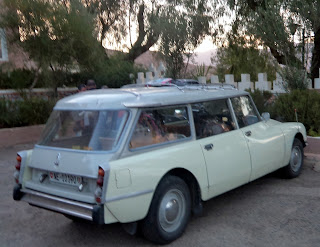Jamila Hounaine gives us a woman's view of weddings in Taroudant a much bigger town than Taliouine.
Before writing about the marriage ceremony in our city Taroudant, I would like to define marriage and cite different steps taking place when one wants to marry.
I. Definition of marriage:
Marriage is a social contract between two individuals (a male and a female) that unites their lives legally, economically, and emotionally.
II. Steps for marriage:
1. The “wali” : is the nearest relative to the lady, such as her father or brother if the father is unable to perform the task or the “wakil”,imam or appointed guardian to act on behalf of the best interests of the lady. It is his job to help find and interview the background of any potential suitor for the lady.
2. After selecting the proper young man, there is an appointment scheduled for the two of them to meet (under chaperoned supervision) to discuss their possible future together.
3. After the initial meeting, both of them are to pray to Allah in the form of a prayer called “salatul istikharah” for guidance. If this is not done, it does not invalidate the marriage, but it is something that will really help both of them in their future.
4. If both of them recognized positive signs from the “salatul istikharah”, then they would proceed to make “nikah” (marriage contract). This again is done under the supervision of two witnesses. It is usually attended by an imam or a knowledgeable person in Islam, just so that there would be no mistakes in taking care of the details.
5. The “mahr” (dowry):is presented and the lady is asked if she is prepared to accept this mahr and be married to this man. This is usually repeated three times in front of the witnesses, but at least one acknowledgement from the lady is necessary to proceed.
6. The woman would then sign the “nikah” document in front of the witnesses.
7. The witnesses (usually two) would sign and attest that they had been present at the “nikah” and did witness the acceptance by the lady of the offer of the marriage by the man. The imam might also sign ,but this does not affect the validity of the marriage. Any two adult Muslims may witness the document. In the case of women witnesses, it is correct to have two in place of one. If there were to be two witnesses, but one is a woman, then it would be correct to have a man and two women sign the document.
8. After the acceptance of the lady, the signing of the “nikah”, witnessing of the two witnesses and exchanging of “mahr”, the man and woman are considered legal couple in Islam to live together.
9. After the signing of the marriage document, and the acceptance of the bride of the dowry, and the signing of the two witnesses, the groom is free to take his bride at anytime he chooses. There is no waiting
10. If the groom is unable or unwilling to take the bride after an extended period of time and she or he would like to annul the marriage, they would simply let the other person know and cause the dowry to be returned to the groom.
The main rituals of marriage ceremony in Taroudant :
By instinct, a male looks for a female to marry A man dreams of a perfect second part with whom he wants to unite and settles forever. Thus, the moment a man and a woman agreed to marry each other. The man has to ask her for marriage officially. That is to say, he meets her parents and tells them that he wants to marry their daughter. Once the parents of the girl agree, they tell him to bring his parents to discuss the affair together. As a result, they fix a date to come up with such gifts; for example, henna, parfums, clothes, different kinds of slippers and shoes, dates, a sheep to slaughter in the day of the marriage,…all these things are carried by a carriage or two with a traditional musical group moving from the house of the groom to the house of the bride passing through many streets to show this in public and announce that Mr.X is going to marry Miss Y. This is what is called “Khoutba”. In the first day of the marriage, the bride makes henna in her hands and feet.

The next day, the “Adoul” (two men to witness the signing of the contract of marriage). The third day is devoted to such a celebration in which the family members, friends, neighbours are present to eat and dance.
Unlike the european tradtion where the dowry is paid by the bride's family to the groom's the dowry here is paid by the groom to the bride.

















































